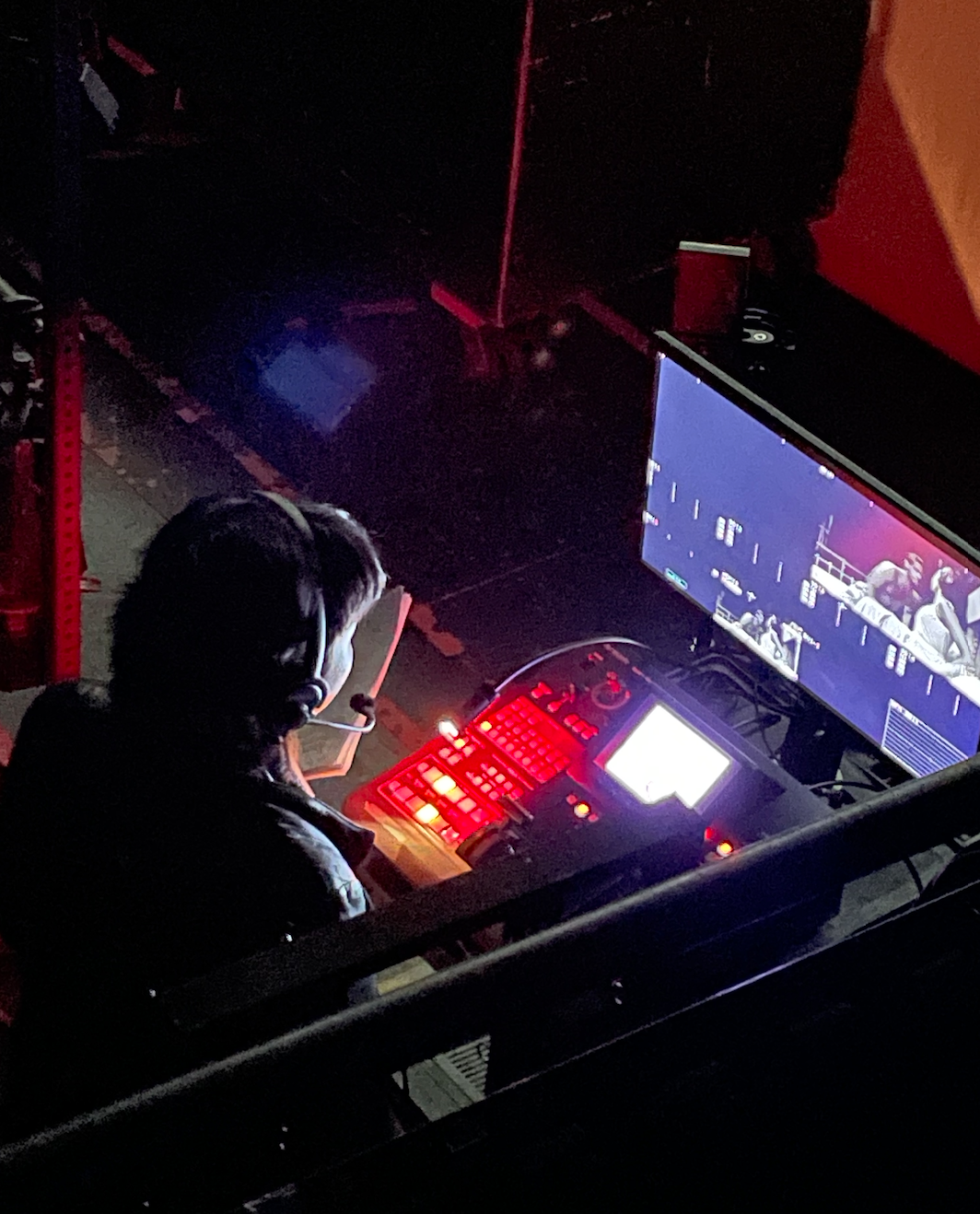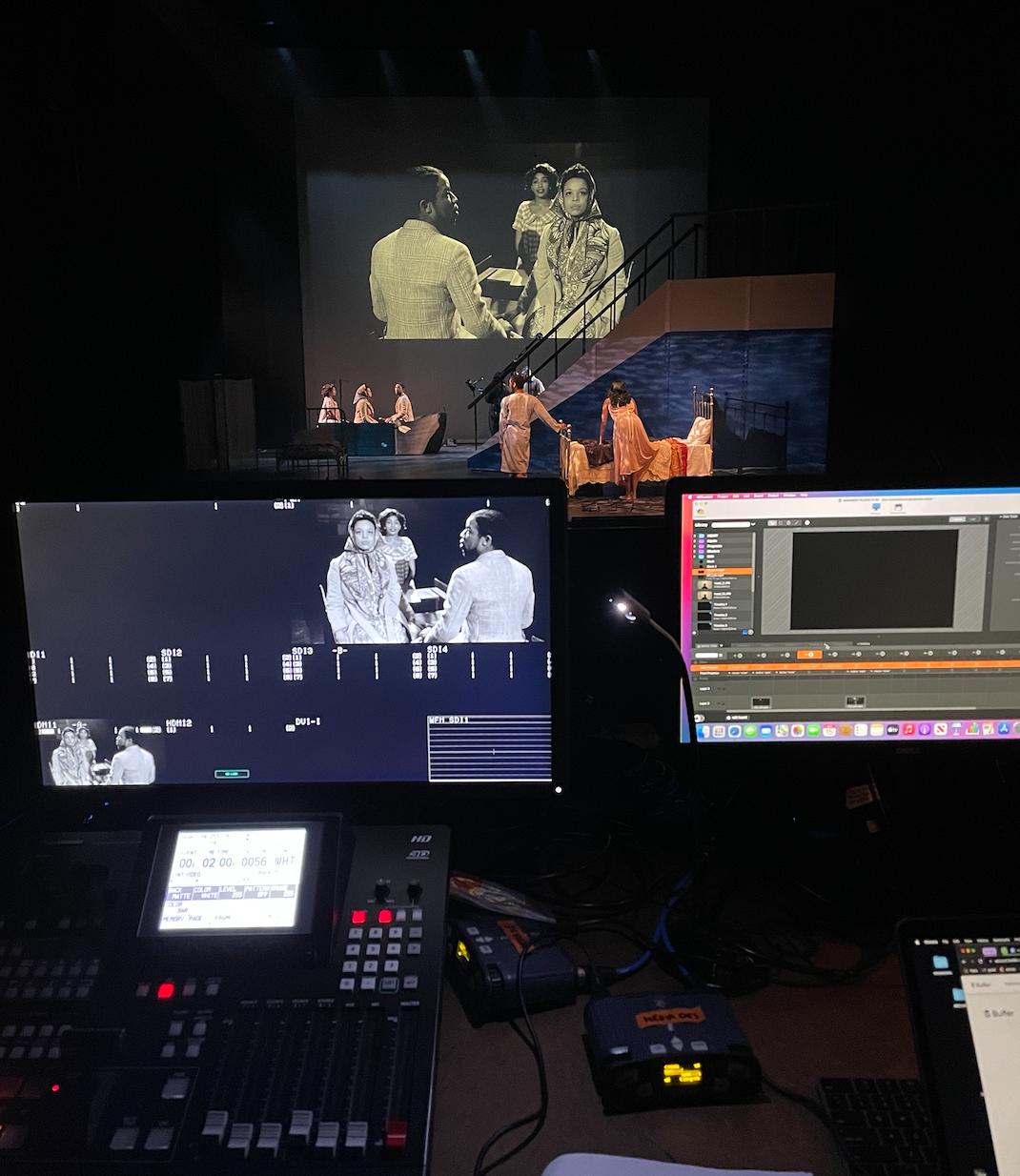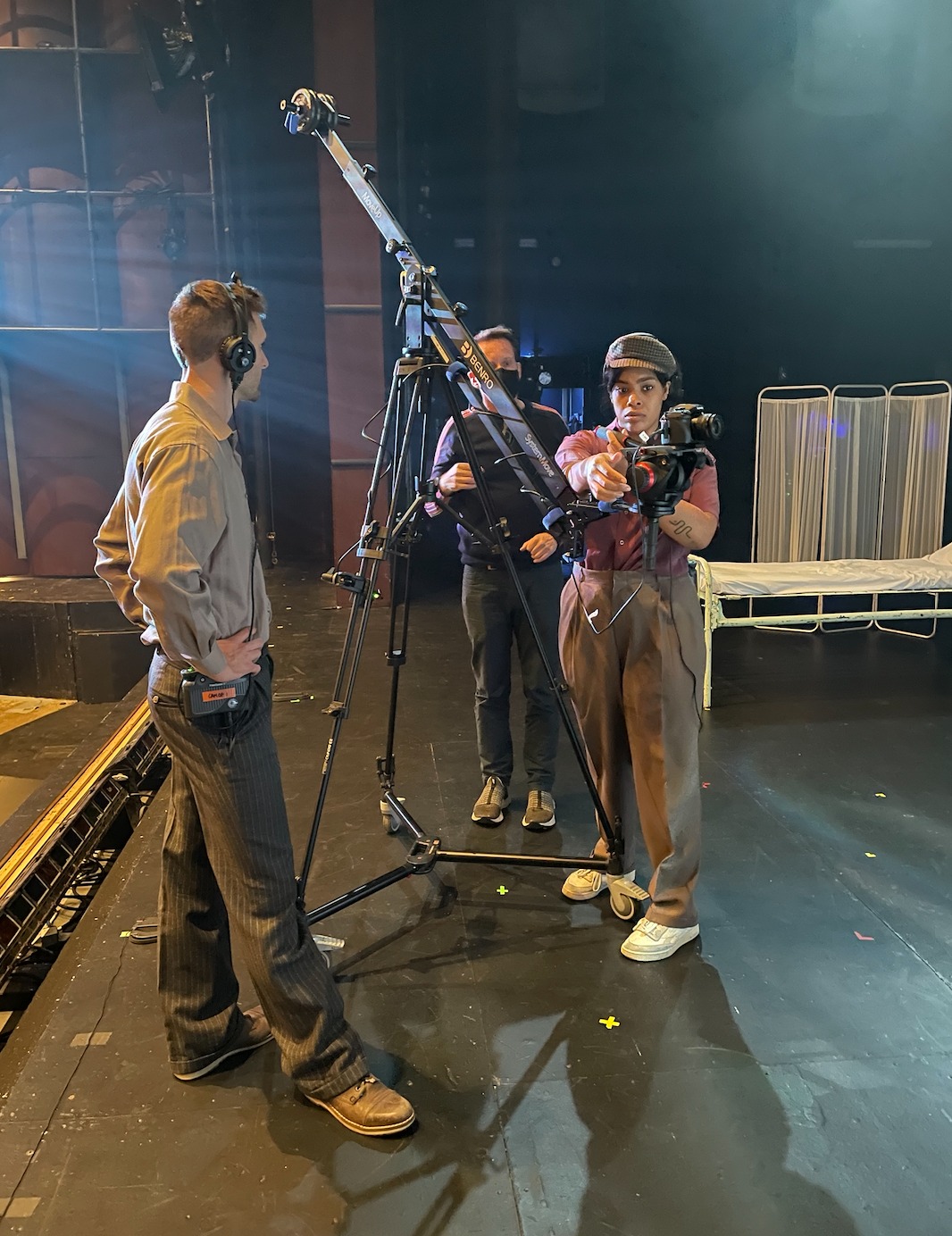The Adrienne Kennedy Plays:
He Brought Her Heart Back in a Box | Sun | A Movie Star Has to Star in Black & White
This show is composed of three independent works by playwright Adrienne Kennedy, selected by the director in an effort to showcase the prowess and profundity of her writing. The media design, as well as the rest of the design elements in this production, needed to suit the needs of each individual play while maintaining aesthetic and conceptual through lines to guide the audience through her work. I wanted to establish the projections as extensions of the Black characters of these plays, painting the memories and imaginations that their realities don't allow space for.
Director: Peter Andersen
Media Design: Davine Byon | Assistant Media Design: Catherine Ashley
Media Engineer: Bahaar Esfahani
Scenic Design: Sierra Young
Lighting Design: Xotchil Müsser
Sound Design: Daniel Ocanto
Costume Design: Claudia Brownlee
Dramaturg: Julia "Juju" Nieto
He Brought Her Heart Back in a Box
I began with slow-moving ghostly portraits in He Brought Her Heart Back in a Box as a way to bring in the many family members and townspeople in this story who are webbed together in complex and violent ways. The most significant portrait, which is the only one that recurs throughout the work, is that of Kay's late mother, whose cause of death is debated by members of the community.
Sun
Sun is a choreopoem, a spoken montage of one man's life in his final moments before death. He is no man, and every man; the work is dedicated to Malcolm X, but the man is not explicitly Malcolm X; there are references to da Vinci's Vitruvian man, and also Kennedy's father. I wanted to create the illusion that my projections were shadows that played with the real shadows caused by scenic objects and lighting. This illusion implies objects that aren't there and versions of man that he cannot see, expanding the space limitlessly using only what is onstage.
A Movie Star Has to Star in Black and White
Live camera operators: Catherine Ashley & Olav Carter
Clara lives vicariously through the heroines of her favorite Hollywood films of the 1940s-50s, all of whom are played by white women; in Clara's imaginary version, they are played by Black actresses in an attempt to insert her likeness into the worlds she loves. This show opens with the Columbia Pictures intro, slowed and doubled to signify to the audience that the "movie" they are about to see isn't quite right. Two live cameras capture Clara's versions of scenes from Viva Zapata (1952), Now Voyager (1942), and A Place in the Sun (1951); she is never on screen, but outside in the tumult of her family's emotional, romantic, and medical grievances. In the last scene, she finally takes ownership of both worlds that she is caught between, through her own monologue delivered directly into the camera.
Process:




